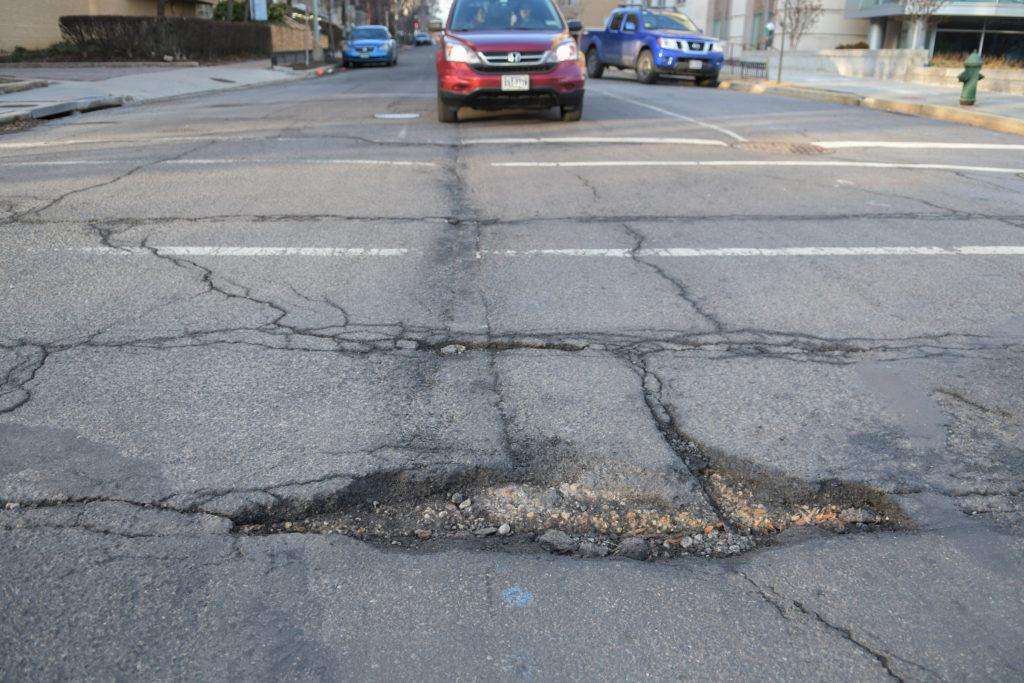The District Department of Transportation is fixing three times more potholes in Ward 2 this year than it was a year ago, city officials said.
The department received 247 service requests to fill potholes last month in Ward 2, which encompasses the Foggy Bottom Campus, compared to 76 in January last year, Lauren Stephens, a public affairs specialist at the DDOT, said. Local representatives and officials said excess rain has contributed to the increased number of potholes and the greater number of requests can also be attributed to residents being more aware of how to submit repair requests.
Pothole service requests have surged across the District in the past month, with 776 across the city between Jan. 1 and Jan. 24. DDOT received less than half that number in 2018 with about 350 reports filed, Stephens said.
She said potholes are formed when rainwater seeps beneath asphalt, freezes and later thaws, so the “extremely” rainy year boosted the number of potholes in the District.
The District received a record-high 71 inches of rain in 2018, The Washington Post reported.
Stephens said it usually takes about three days to fill a pothole, but repair teams can be delayed if snow falls.
“Our crews are working around the clock to fill potholes,” she said in an email. “Mayor [Muriel] Bowser has beefed up DDOT’s capacity to respond to potholes with the purchase of new equipment.”
Last April, Bowser kicked off the 10th annual “Potholepalooza” campaign – a monthlong effort to fill potholes across the city – and announced the launch of PaveDC, a plan to improve more than 300 roads and sidewalks in poor condition by 2024. As part of the plan, she announced that DDOT would begin using eight new hot boxes to maintain asphalt’s proper temperature, which Stephens said now allows the department to operate “much more efficiently.”
Detrick Campbell, a member of the Foggy Bottom and West End Advisory Neighborhood Commission, said heavy traffic in the District, on top of poor weather conditions, has contributed to an increase in potholes. Congested roads can also delay DDOT workers in filling potholes, he said.
“The District is one million people, and so many cars on the road can have the roads give way,” he said.
Campbell said the time and cost of repairs can vary depending on the size of the pothole and how busy the street is. He said DDOT sometimes repaves an entire street if a block with a pothole is in need of other repairs.
“DDOT generally has a measuring system or a tracking system where they take in multiple factors into account and rank which potholes on which street need to be fixed,” Campbell said. “That can always change.”
Trupti Patel, an ANC commissioner, said the increase may also be attributed to better education about the ways residents can submit service requests. She said DDOT has been more “proactive” in reaching out to the D.C. community and informing them that they should contact 311 to report maintenance requests.
Patel said repairing potholes also benefits the city by preventing lawsuits from residents who may damage their cars while driving on roads in need of repair.
“It would mitigate costs for the city in legal fees, time spent in having to go back and forth in court to try to settle this,” Patel said. “It’s just cheaper for them to say, ‘We’re on it, let’s repair this.’”
Ilena Peng contributed reporting.





